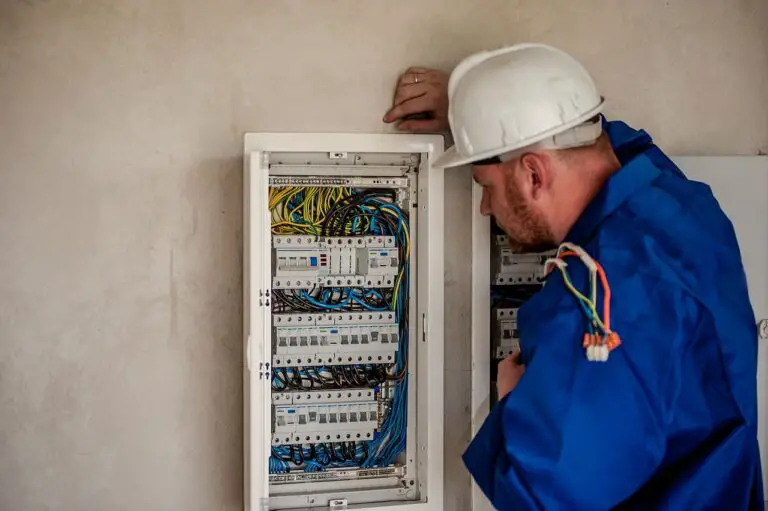Apprenticeships in New Zealand: All You Need To Know

Apprenticeships are quite common in New Zealand and are typically paid career paths. The apprentice receives both on-the-job training and classroom instruction. Apprenticeships are prevalent in tradies, which are known for their practical skills and hands-on approach, making them indispensable in fields that require craftsmanship, hard work, and technical skills.
In New Zealand, apprenticeships are available in a wide range of occupations, e.g. in building or plumbing. To become an apprentice, you must be at least 16 years old and have completed Year 10, Level 2, or equivalent education. You can find apprenticeships through the Apprenticeship New Zealand website, trade training institutes, industry associations, job boards, and networking.
If you are considering doing an apprenticeship, this article is for you. We explain where and how to find them, how to apply and what to expect from vocational education.
Find out which jobs pay the most and don’t require a degree!
What is an Apprenticeship?
Apprenticeship is a form of workplace training that students go through to become qualified tradies. Apprenticeship allows participants to gain hands-on expertise while contributing to the workforce. It’s an integral part of New Zealand’s vocational education, providing a structured way for individuals to learn and work simultaneously.
An apprentice is working full-time side to side with qualified tradies and receives a salary. It’s a great way to learn the job. Hence, apprenticeships offer a dynamic and hands-on approach to vocational education.
These programs are designed for those who have completed vocational education and are now ready to immerse themselves in real-world, practical learning experiences.
Professions and industries
The scope of apprenticeships in New Zealand is broad and diverse, spanning various industries which generally involve some manual work. Some of the most common jobs in traditional trades are:
- carpentry
- building
- plumbing and electrical work
- tourism
- newer fields like information technology, engineering and healthcare.
Nowadays, you can find an apprenticeship in almost any field. That opens a lot of opportunities for students who aren’t willing to study at the university.
The significance of tradies in New Zealand
Tradie culture is huge in New Zealand. Without tradies, New Zealand wouldn’t be what it is now. Tradies, also known as tradespeople or skilled artisans, are the backbone of essential industries that keep New Zealand running smoothly.
These professionals ensure our homes, roads, and other essential aspects of daily life are functioning well. They apply their expertise in construction, infrastructure, maintenance, and more.
Besides, due to the fact that most New Zealanders live in stand-alone houses, we literally need a lot more tradies than in other countries where people live in apartments. Imagine how many things can go wrong in the house!
Apprenticeships in New Zealand
Apprenticeships are a great way to learn a trade or skill while you earn a wage. They are available in hands-on occupations in fields like building and construction, engineering, information technology, manufacturing, healthcare, retail, hospitality, tourism and much more.
Apprenticeships offer many benefits, including paid employment, on-the-job training, practice, classroom instruction, a pathway to a skilled career, and, most importantly, the opportunity to earn while you learn.
If you want to work in a trade or acquire practical skills, an apprenticeship is a great option. It’s a fantastic option for someone who wants to start working early on and isn’t planning to attend university.
Apprenticeships as qualification
All New Zealand education is classified by levels. These are important scores for your career and pay. To be recognized as a qualification, apprenticeships must include a strong theoretical component and result in either:
- A Level 4 New Zealand qualification, comprising a minimum of 120 credits, or
- Two or more qualifications of at least 120 credits in total, provided this includes only Level 3 and 4 qualifications and at least 60 out of the total credits are at Level 4.
Ultimately, you must achieve a Level 4 qualification to work as a full-on tradie after your apprenticeship.
The main levels of NZQF (New Zealand Qualifications and Credentials Framework) include:
| Name of qualification | Levels |
|---|---|
| Certificate | Levels 1-4 |
| Diploma | Levels 5-6 |
| Bachelor’s Degree | Level 7 |
| Graduate Certificate/Graduate Diploma | Level 7 |
| Bachelor Honours Degree | Level 8 |
| Postgraduate Certificate/Postgraduate Diploma | Level 8 |
| Master’s Degree | Level 9 |
| Doctoral Degree | Level 10 |
- Certificate level 1 qualifies you with basic knowledge and skills for work and further learning.
- Certificate level 2 qualifies you with introductory knowledge and skills for a field(s)/areas of work or study.
- Certificate level 3 qualifies you with knowledge and skills for a specific role or roles within fields/areas of work and/or preparation for further study.
- Certificate level 4 qualifies you to work or study in broad or specialised fields or areas.
- Certificate level 5 qualifies you with theoretical and/or technical knowledge and skills within an aspect, or aspects, of a specific field of work or study.
Source: Op.ac.nz.
How do Apprenticeships work in New Zealand?
Apprenticeships involve a combination of on-the-job training and classroom-based learning. This approach ensures that students acquire both practical skills and theoretical knowledge. Some career paths are available right after school, while others require vocational training.
As part of their apprenticeship, individuals work under the guidance of experienced mentors or professionals on the site (at the job) in their chosen field. This mentorship fosters skill development, problem-solving abilities, and a deep understanding of industry practices.
Students complete apprenticeships within workplaces, e.g. at the factory, shop or on-site. This enables you to experience the realities of the chosen profession firsthand (so you won’t be surprised later on).
Whether it’s a construction site, a hospital, a butcher shop, a workshop, or an office, apprenticeships bring learning out of the classroom and turn it into action.
Costs and earnings
The best part of apprenticeships is that it’s free, and you even get paid! The typical salary of an apprentice is around $22.70 to $25 per hour. Hence, if you are working full-time, you can expect a monthly salary of $3,934 to $4,333 gross.
Read more about salaries in New Zealand.
Unlike traditional educational paths, apprenticeships provide a unique advantage by allowing individuals to earn money while they learn. Apprentices are employed by companies, sole proprietors or organizations, receiving a salary for their work.
Additionally, the costs associated with their education are often covered or subsidized by the employer or the government, making some apprenticeships technically free. Yet, you might still have to pay at some providers. See more on apprenticeship providers. Check if you are eligible for free apprenticeships.
Duration and achievement
The duration of an apprenticeship varies based on the profession but usually is between 2 and 4.5 years or longer.
Regardless of the length, apprenticeship ends when the Level 4 industry-recognized qualification is achieved. These qualifications are usually gained by passing an exam or/and practice test.
Resources and links
For those interested in exploring apprenticeships further, a wealth of resources is available. The New Zealand government’s Tertiary Education Commission website provides valuable insights into the apprenticeship landscape.
Organizations like Primary ITO offer specialized apprenticeship programs, connecting individuals with the right opportunities. To discover potential career paths and gain inspiration, the Vocational Pathways on the Careers New Zealand website is a valuable resource.
How to get an Apprenticeship in New Zealand

So, if you are determined to get an apprenticeship in New Zealand, what’s now?
- Find a job
- Find a training provider
Generally, to apply for apprenticeships, you will need either to contact an official provider of training and apprenticeships or find a job on your own.
Te Pūkenga and Tertiary Education Commission are the largest organizations dealing with apprentices. After you have found a job and your employer is ready to start your apprenticeship, you can contact a relevant training provider and sign up with them. Providers vary depending on your trade; for example, a relevant provider for builders will be BCITO.
- ATNZ is an organization offering engineering apprenticeships.
- Competenz.org.nz offers a wide range of apprenticeships across various industries.
Requirements for apprenticeship
While specific requirements can vary based on the job, industry and organization, there are general prerequisites for securing an apprenticeship:
- Be at least 16 years old
- Completion of a relevant vocational education program or NCEA Level 2 or above (depending on the trade)
- Be a NZ citizen/permanent resident
- Have current full/restricted driver’s licence (for many jobs)
- Pass a drug and alcohol test
- Have no criminal background
The process of securing an apprenticeship
1. Exploration and decision: The first step towards getting an apprenticeship involves exploring the various industries and professions that align with your interests and aspirations. Research different sectors, assess your skills and preferences, and identify the field that resonates with you.
2. Training and education: To qualify for an apprenticeship, you typically need to have completed a vocational education program. This can last 1 to 4 years and equips you with the basic knowledge and understanding necessary to excel in your chosen field.
3. Research and networking: Connect with industry professionals, attend career fairs, and engage in networking opportunities. Building connections in your chosen field can provide insights, guidance, and potential leads for apprenticeship opportunities.
4. Application process: Keep an eye out for apprenticeship openings in your desired industry. Many organizations advertise apprenticeship positions on their websites or through job boards. When you find a suitable opportunity, follow the application instructions carefully.
5. Interview and assessment: If your application is shortlisted, you may be invited for an interview or assessment. This is an opportunity for the employer to gauge your passion, skills, and suitability for the apprenticeship role.
6. Selection and acceptance: If you successfully pass the interview and assessment stage, you’ll receive an offer for the apprenticeship position. Take the time to review the terms and conditions before formally accepting the offer.
7. Commencement of apprenticeship: Once you accept the offer, your apprenticeship journey begins. You’ll start working alongside experienced professionals, learning the ropes, and contributing to real projects.
Valuable resources and tips
- Government portals: The official government resources offer comprehensive information about apprenticeships, industries, and training providers.
- Industry associations: Many industries have associations that provide valuable insights into trends, opportunities, and apprenticeship programs.
- Career advisors: Seek guidance from career advisors, mentors, or educators who can help you navigate the apprenticeship landscape.
- Online job boards: Websites like Seek, Trade Me Jobs, and Indeed often list apprenticeship opportunities across various sectors.
- Networking: Attend industry events, seminars, and workshops to connect with professionals who can offer advice and potentially recommend apprenticeship openings.
Can foreigners do apprenticeships in New Zealand?
Generally, you must have a valid work visa to enrol in the apprenticeships in New Zealand.
If you’re a foreigner with hands-on skills and interests, you might consider pursuing apprenticeships in New Zealand. Fortunately, foreigners can complete an apprenticeship, too, but they must consider the process, requirements, visa, and more.
Visa
Most foreigners who take an apprenticeship already have a visa or residency in New Zealand. Coming from abroad to complete an apprenticeship is more difficult visa-wise, as most programs require an NZ passport or permanent residence.
Hence, it’s crucial to ensure that you have the appropriate visa that allows you to work and study. The visa options you might consider:
- Student Visa: If you’re planning to enrol in a vocational education program that includes an apprenticeship component, a student visa might be suitable. This visa permits you to study and work for up to 20 hours per week during the academic year and work full-time during breaks.
- Student and Trainee Work Visa: This visa might be the most suitable as it’s dedicated to getting practical experience in your field. With this visa, you can study and undertake practical training in NZ.
- Work Visa: If you have secured an apprenticeship opportunity in New Zealand, you may be eligible for a work visa. The specific visa type will depend on factors such as the duration of your apprenticeship and the industry you’re entering.
- Skilled Migrant Visa: Once you complete your apprenticeship and acquire the necessary qualifications and skills, you might be eligible for a skilled migrant visa. This visa is designed for individuals with the skills and experience that New Zealand values in its workforce. It also grants a permanent residence if you meet the criteria.
Requirements for foreign apprentices
Apart from the most important requirement – a visa, there are other things to keep in mind. The exact requirements can vary based on the industry and the organization offering the apprenticeship, but here are some general prerequisites for international applicants interested in pursuing apprenticeships in New Zealand:
- English language proficiency: Depending on the industry and the program, you might need to provide evidence of your English language proficiency. This is to ensure effective communication in the workplace and classroom. A score of 6.5 in IELTS is recommended.
- Educational background: If the apprenticeship program has educational prerequisites, ensure that your prior qualifications align with the program’s requirements. You will need to have at least NCEA Level 2 for most jobs.
- Work experience: Some apprenticeship programs might require you to have relevant work experience in your chosen field. This demonstrates your commitment and familiarity with the industry.
- Health and character requirements: Most visa applications include health and character checks. You’ll need to provide medical and police clearance certificates to meet these requirements. Also, many apprenticeships will only accept people with a clear criminal record.
How to get an apprenticeship as a foreigner in New Zealand
- Research: Begin by researching the industries and apprenticeship programs that interest you. Consider the skills you wish to acquire and the industries that align with your goals.
- Visa application: Once you’ve secured a place in an apprenticeship program, apply for the appropriate visa. Ensure you meet all the visa requirements and provide accurate documentation.
- Preparation: Before arriving in New Zealand, make sure you have accommodation arrangements, funds to support yourself, and a clear understanding of your apprenticeship schedule.
- Induction and training: Upon arrival, you’ll likely undergo an induction and training process to familiarize yourself with workplace practices and expectations.
- Learning and work: Your apprenticeship journey will involve a combination of learning in the classroom and applying your skills in the workplace. Embrace both aspects to gain a holistic understanding of your chosen field.
Typical apprenticeship jobs in New Zealand
Here are some of the most common apprenticeship jobs you will come across in New Zealand:
- Carpentry: Carpenters are the architects of wooden structures. From constructing houses to crafting furniture, carpentry is a trade that requires precision, creativity, and a deep understanding of materials.
- Plumbing: Plumbers keep the water flowing and the pipes functioning. They install, repair, and maintain plumbing systems in residential, commercial, and industrial settings.
- Electrical: Electricians are responsible for all things electrical. They install and maintain wiring, circuits, and electrical systems in buildings, ensuring safety and functionality.
- Automotive Mechanics: Automotive mechanics specialize in maintaining and repairing vehicles. From cars to trucks, their skills keep transportation running smoothly.
- Painting and Decorating: Painters and decorators add aesthetics to spaces. They work on everything from homes to commercial buildings, enhancing visual appeal.
- Bricklaying: Bricklayers construct walls and structures using bricks, blocks, and other masonry materials, providing the foundation for sturdy buildings.
- Plastering: Plasterers create smooth and even surfaces on walls and ceilings, contributing to the finishing touches of construction projects.
Here is where to look for apprenticeships in particular fields:
- Building and Construction Trades:
- Carpentry: To become a carpenter, you can find apprenticeship opportunities through local construction companies, trade schools, or industry associations like the New Zealand Certified Builders Association (NZCB).
- Plumbing: Seek plumbing apprenticeships through plumbing companies or inquire with the Plumbing, Gasfitting, and Drainlaying Board (PGDB) for guidance.
- Electrical Trades:
- Electricians: Electrical apprenticeships can be located through electrical contractors. You might also want to contact the Electrical Workers Registration Board (EWRB) for information on apprenticeship requirements.
- Automotive Trades:
- Automotive Technician: To become an automotive technician, explore opportunities at automotive repair shops or dealerships. You can also check with the Motor Industry Training Organisation (MITO) for apprenticeship options.
- Plastering and Painting:
- Plasterers and Painters: Contact local plastering and painting companies for apprenticeship openings.
- Engineering and Metalwork:
- Mechanical Engineering: Look for apprenticeships in mechanical engineering with engineering firms or manufacturers.
- Hairdressing and Beauty:
- Hairdressing and Beauty Therapy: If you are interested in these fields, consider contacting local salons or spas for apprenticeship opportunities.
- Hospitality and Culinary Arts:
- Chef: To become a chef, inquire with restaurants, hotels, or culinary schools that offer apprenticeship programs.
- Plumbing and Gasfitting:
- Gasfitters: Find apprenticeships in gasfitting through gasfitting companies or inquire with the PGDB.
- Automotive Engineering:
- Automotive Engineering: Seek apprenticeships at automotive engineering workshops or contact MITO for guidance.
- Farming and Agriculture:
- Agriculture: Explore opportunities in farming and agriculture by contacting local farms or agricultural organizations.


![Best Cities For Job Opportunities in New Zealand [2024]: Attention Job Seekers](https://simplenewzealand.com/wp-content/uploads/2023/02/casey-schackow-h8wTmJU4XyU-unsplash-768x512.jpg)
![25 Best Side Hustles Ideas in New Zealand [2024]](https://simplenewzealand.com/wp-content/uploads/2023/07/wallpaperflare.com_wallpaper-1-1-768x499.jpg)
![Salaries in New Zealand vs Australia: Let’s Be Real [2024]](https://simplenewzealand.com/wp-content/uploads/2023/06/pexels-david-peterson-4359064-2-768x689.jpg)
![Salaries in New Zealand vs the UK: Where You Get Paid More? [2024]](https://simplenewzealand.com/wp-content/uploads/2022/11/Depositphotos_508131346_L-768x512.jpg)

